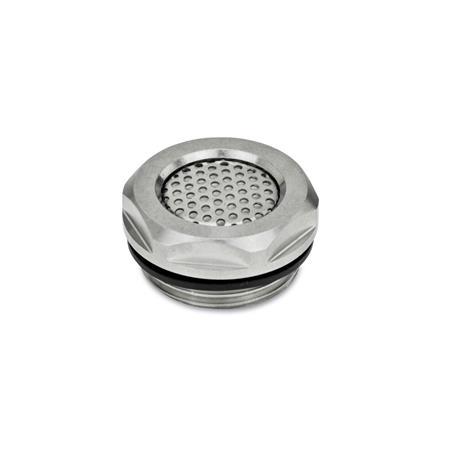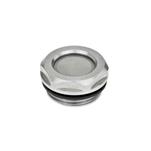Product description
Two-way breathable membranes GN 7404 are used when constructing housings and equipment. When installed in the wall of a housing, they can be used to equalize the pressure between the interior of the housing and the surrounding area.
Any dirt, dust, oil, or water in the gaseous medium is kept out. This prevents dirt and moisture from entering the interior of the housing and prevents oil from dripping into the surrounding area.
In order to protect the membranes, they should not be completely covered with oil or water, and the differential pressure/air permeability volume should not be exceeded. They should be installed on the side/vertically in a protected position.
The external diameter of the housing with the recessed hexagon is designed for tapped plates for tube fittings DIN 3852.
The seal is embedded in a recess on the planar side. This prevents it from being lost and squeezed outwards during the tightening process.
Assembly instruction:
For mounting on walls of less than 4 mm thickness please use mounting nuts GN 7430.
Specification
- Body
Stainless steelNI AISI 303
- Membrane
Non-woven nylon material /
Acrylic copolymer wetting
- Membrane enclosure
Plastic (Polyamide PA)- Glass fiber reinforced
- Temperature resistant up to 100 °C
- Protective strainer
Stainless steel AISI 304
- Seal / O-ring
Rubber NBR (Perbunan®)
RoHS
Accessory
On request
- Body in brass
- Other membrane pore sizes





